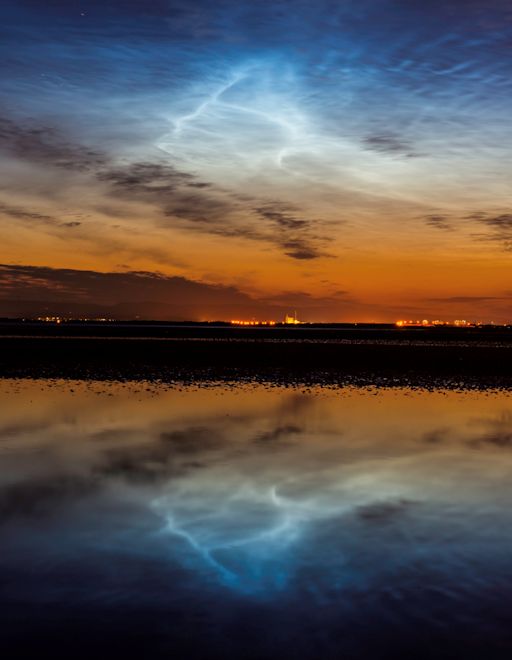
![]()
Solar wind
speed: 411.4 km/sec
density: 29.1 protons/cm3
explanation | more data
Updated: Today at 2116 UT
![]()
X-ray Solar Flares
6-hr max: M1 2000 UT May31
24-hr: M1 2000 UT May31
explanation | more data
Updated: Today at: 2100 UT
![]()
![]()
![]()
Daily Sun: 31 May 13
![]()
![]()
None of these magnetically-simple sunspots poses a threat for st
MINOR CME IMPACT: A coronal mass ejection hit Earth's magnetic field on May 31st at approximately 1600 UT, but the impact was weak. Solar wind speeds ticked upward only a small amount from 350 km/s to 400 km/s. Minor geomagnetic disturbances are possible in the hours ahead. Aurora alerts: text, voice.
BINARY ASTEROID FLYBY: Massive asteroid 1998 QE2 is flying past the Earth-Moon system today. Closest approach occurs at 1:59 p.m. Pacific (4:59 p.m. Eastern / 20:59 UTC), when the asteroid will be 5.8 million kilometers from Earth. Newly-obtained radar images show that 1998 QE2 is a binary system. The 2.7 km wide primary is circled by a smaller 600 meter satellite. Get the full story from Science@NASA
NOCTILUCENT CLOUDS: Last night, sky watchers across northern Europe witnessed a vivid display of noctilucent ("night-shining") clouds. On May 30th, luminous electric-blue tendrils lingered for hours after sunset, disappeared for a while, then re-appeared before dawn on May 31st. M. J. S. Ferrier photographed the apparition from Barassie Beach in Troon, Scotland:
Noctilucent clouds (NLCs) form near the top of Earth's polar atmosphere when water vapor from the planet below mixes with meteor debris from space. They appear during summer because that is when the mesosphere is coldest and most humid. This year, NLCs appeared early, more than a full month before the solstice, setting the stage for an unusually good NLC-watching season.
High latitude sky watchers should be alert for NLCs in the evenings ahead. IN recent years they have been sighted as far south as Utah, Colorado, and Nebraska. Observing tips: Look west 30 to 60 minutes after sunset when the sun has dipped 6o to 16o below the horizon. If you see luminous blue-white tendrils spreading across the sky, you've probably spotted a noctilucent cloud.



